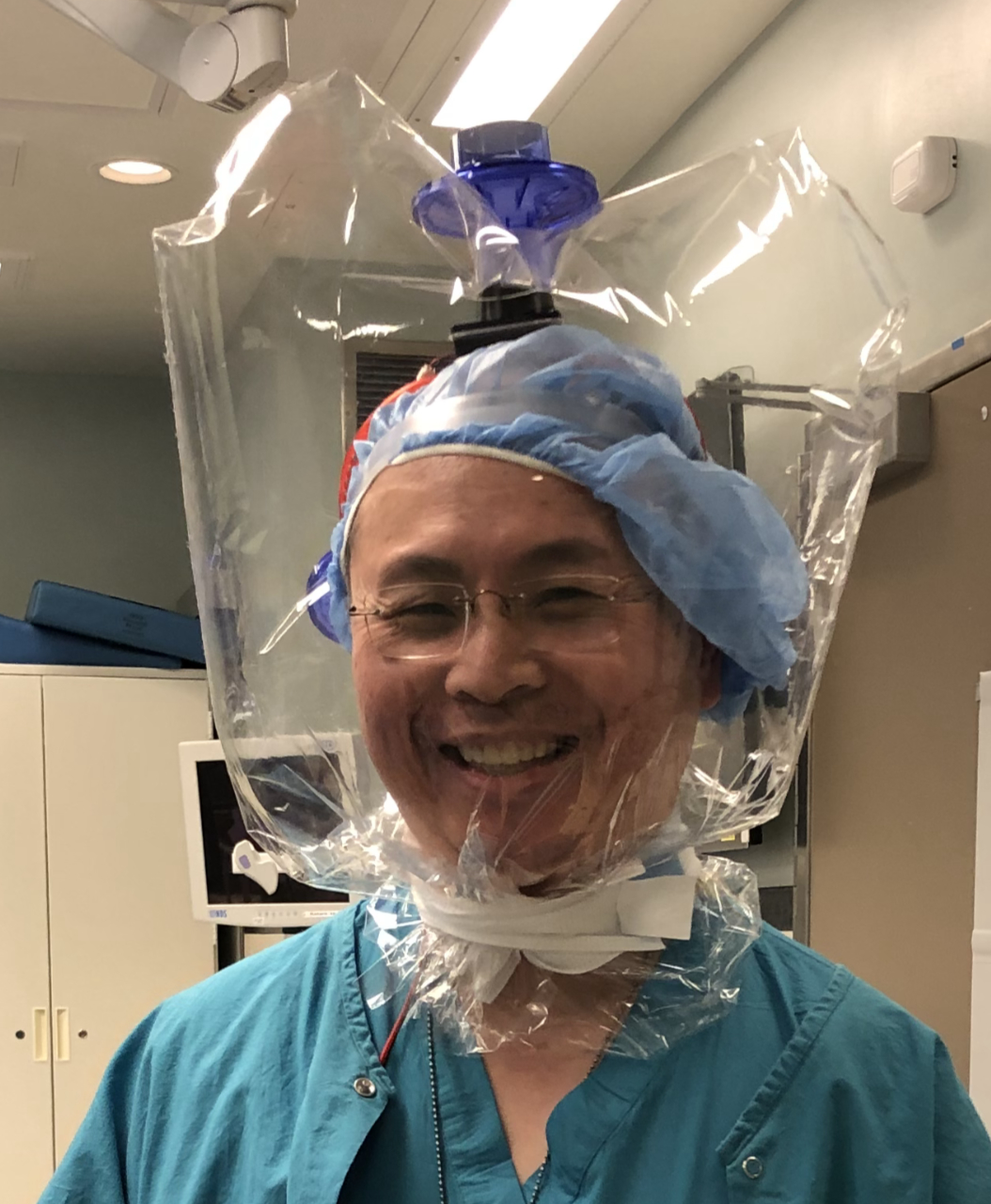
Bunny Science PAPR
prusaprinters
<p>Bunny Science™ PAPR Respirator design by Guy Kuo, MD Anesthesiologist.</p> <p>This is extends utility of already FDA approved anesthesia viral filters to create a PAPR (Powered Air Purifying Respirator). As a full head covering PAPR, it protects against both aerosol, droplet, and splash threat from all directions.</p> <ol> <li>Bunny Science™ PAPR isolates user via positive pressure instead requiring a perfect face to mask seal.</li> </ol> <p>Masks which does not form a perfect facial seal is of no use for protection against aerosolized threat. Some simply cannot use an N95 mask because they can never pass fit testing for leaks. PAPR's avoid this usage pitfall.</p> <ol> <li>Bunny Science™ PAPR extends use of approved, viral filters. These are ubiquitous in the operating room setting and have safely provided higher than N95 filtering for many years.</li> </ol> <p>Design Highlights</p> <ul> <li>Provide filtered breathing air via FDA approved, ventilator viral filter or medical air/oxygen</li> <li>COMPLETELY covers entire head and face to airborne and splash risks</li> <li>Uses positive pressure to maintain protection even without a perfect seal</li> <li>Dramatically lower airflow requirements than traditional PAPR's</li> <li>Use disposables that are readily available</li> <li>Able to create positive pressure seal even using FDM 3D parts.</li> </ul> <p>Hood is a plastic bag placed over head and secured around neck. Breathable environment is at positive pressure. Expiration ports are unidirectional flow valves or additional output filters.</p> <p>Fan draws room air through anesthesia viral filter. Fan is powered by 12 volt battery pack or AC adapter.</p> <p>Developmental Testing</p> <p>This PAPR has been tested against nebulized N95 test aerosols for proper isolation. To simulate worst case test conditions, test aerosol was directed at air intake, exhausts, and neck seal.</p> <p>Physiologic monitoring for CO2 clearance, oxygen saturation, and respiratory rate was verified as sustainable using OR patient monitor and continuous gas sampling analysis. User ability to wear system for over four hours was confirmed. Wearer has ability to carry out typical operating room procedures, watch monitor, fill out EHR, walk and push gurneys.</p> <p>If configured with VB48Max filters (one inflow, one outflow), filtering in both inflow and outflow directions enables very comfortable wear WITHOUT a surgical mask.</p> <p>Main Project Page<br/> <a href="https://bunnyscience.dozuki.com/Guide/Bunny+Science+PAPR/4">https://bunnyscience.dozuki.com/Guide/Bunny+Science+PAPR/4</a></p> <p>Preparation for Wear<br/> <figure class="media"> <oembed url="https://youtu.be/NXW0xUPl0_c"></oembed> </figure> </p> <p>BunnyPAPR video playlist...<br/> <a href="https://www.youtube.com/playlist?list=PL4D2lchZjkr4RzdM9kuF6EGZMYyIZ4cg2">https://www.youtube.com/playlist?list=PL4D2lchZjkr4RzdM9kuF6EGZMYyIZ4cg2</a></p> <p>Most Recent 3D parts files can be downloaded from...<br/> <a href="https://www.thingiverse.com/thing:4243272">https://www.thingiverse.com/thing:4243272</a><br/> or <br/> <a href="https://www.prusaprinters.org/prints/27657-bunny-science-papr">https://www.prusaprinters.org/prints/27657-bunny-science-papr</a></p> <p>The Bunny Science™ PAPR is not yet a regulatory approved device.</p> <p>Use of this respirator is at your sole discretion and risk.'</p> <p>License:<br/> Project is a specific parts design for an embodiment of a patent pending PAPR. This specific parts design is published, for humanitarian reasons, under the Creative Commons Attribution-NonCommercial-NoDerivs CC BY-NC-ND with addition of the following conditions:</p> <ul> <li>The duration of this license ends either 6 months after the emergency proclamation for COVID-19 issued March 13, 2020, by the White House is revoked or ends OR Jan 1, 2022, whichever is earlier.</li> <li>All manufactured units fabricated during the duration of this license can continue to be used for non-commercial purposes beyond the time frame of this license for up to 10 years after the date of original manufacture.</li> </ul> <p>Art Credit: Generic human head model by John Brown.</p> <h3>Print instructions</h3><p>Print in PETG with 0.2 mm layers. 3 perimeters, 4 top/4 bottom layers, 20% gyroid fill.</p> <p>Run nozzle about 5C hotter than usual for better layer to layer seal.</p> <p>With E3D and brass nozzle, I use 255C 1st layer/other layers 260C for PETG.</p> <p>With SLICE Mosquito and tungsten carbide nozzle, I use 255C 1st layer/other layers 265C for PETG.</p> <p>IMPORTANT SLICING SETTING<br/> For the 22 mm and VB48Max filter adapters that connect to a round filter...<br/> Set seam positions to RANDOM. Otherwise, your slicer may align seams and create a vertical seam that can act as a microchannel between the adapter and filter. Such a vertical channel is very small, but may reduce seal between filter end and adapter. Setting seams to random avoids creation of a continuous vertical seam.</p> <p>Post print and usage instructions are at <a href="https://bunnyscience.dozuki.com/Guide/Bunny+Science+PAPR/4">https://bunnyscience.dozuki.com/Guide/Bunny+Science+PAPR/4</a></p>
With this file you will be able to print Bunny Science PAPR with your 3D printer. Click on the button and save the file on your computer to work, edit or customize your design. You can also find more 3D designs for printers on Bunny Science PAPR.
